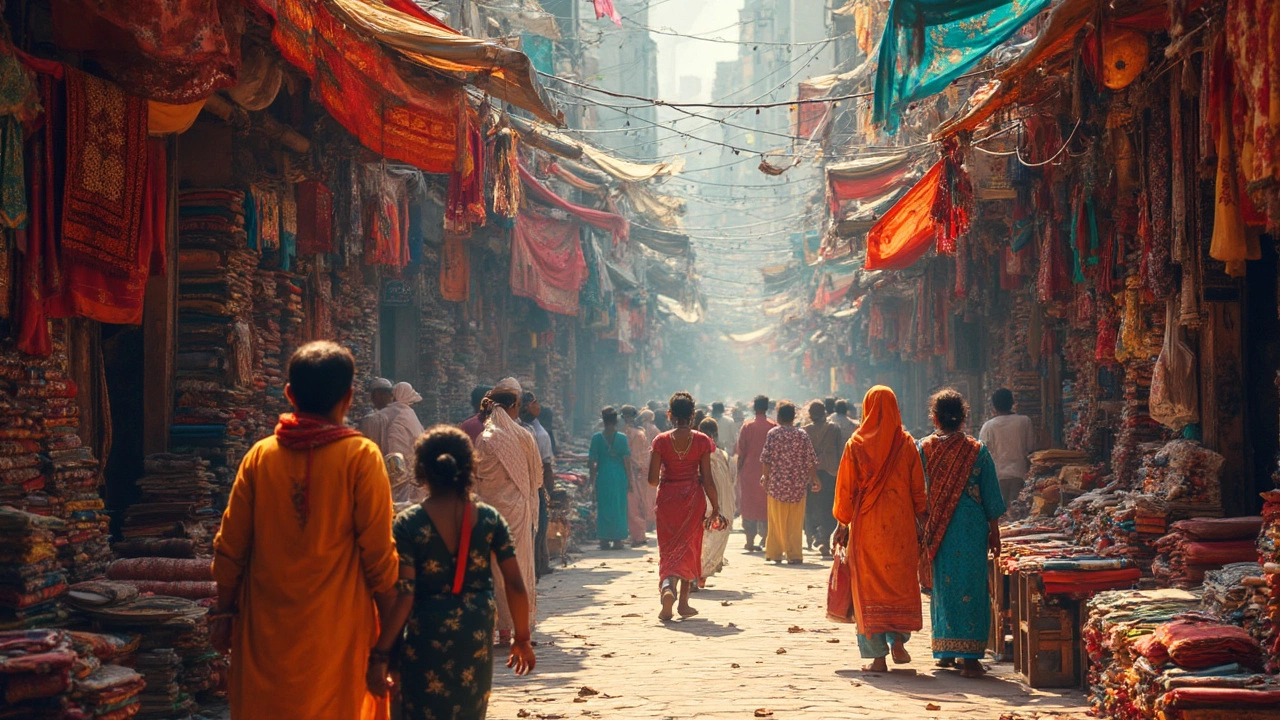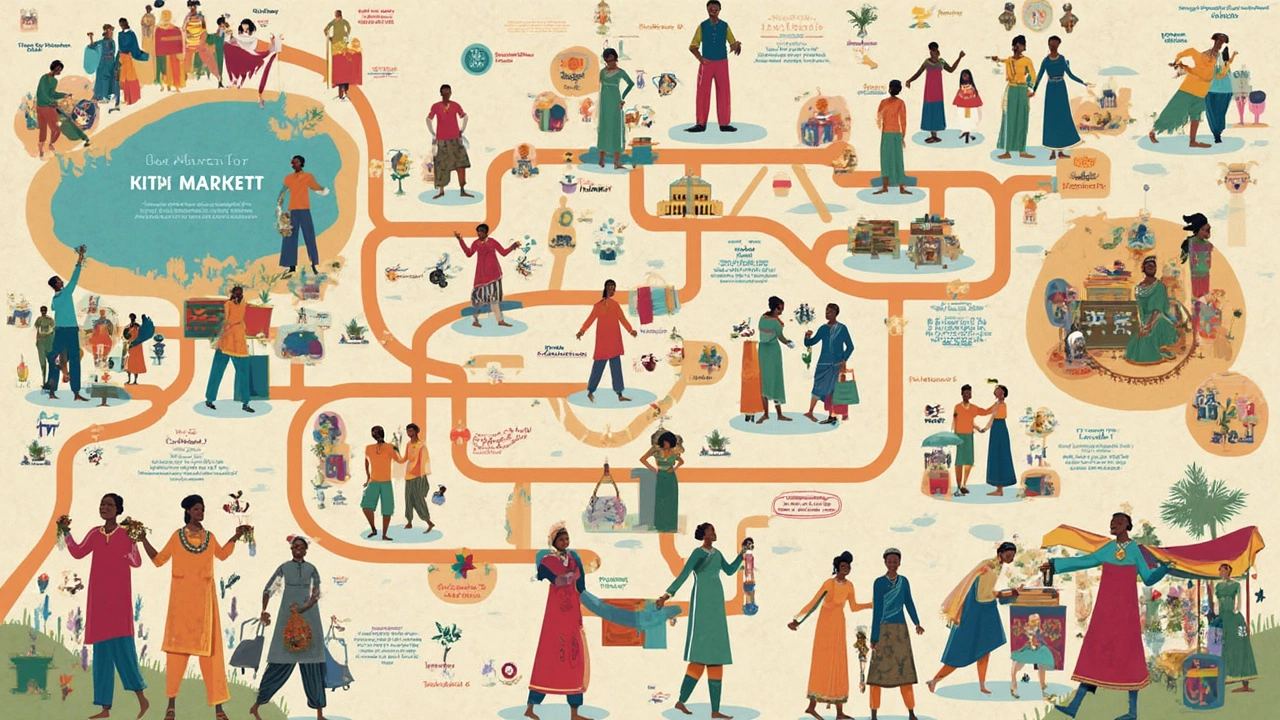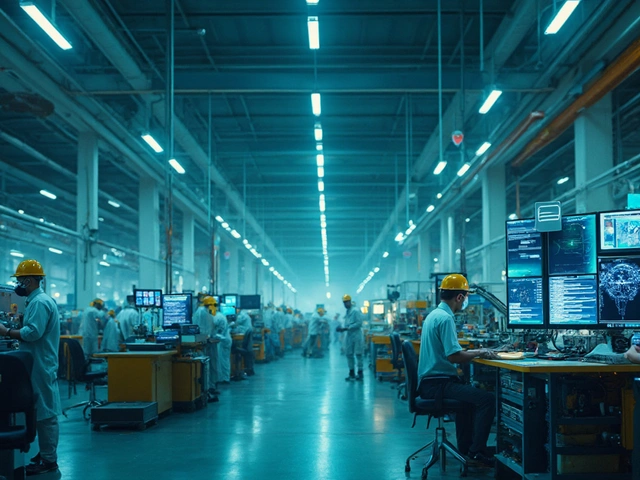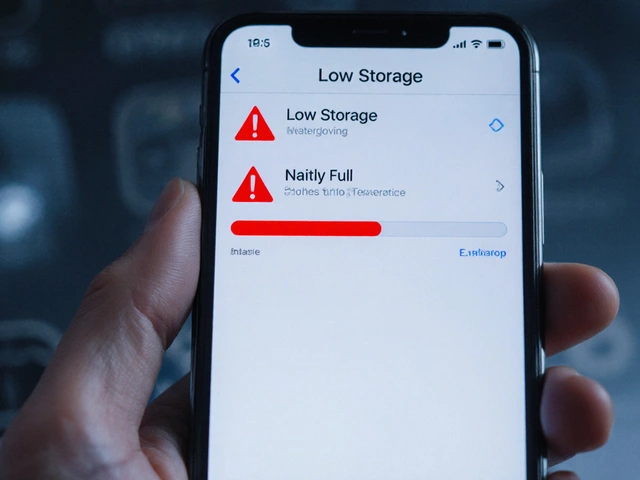
India's textile industry is a massive, colorful tapestry of tradition and progress. But if you're wondering about the biggest textile market in India, the answer often leads to Surat. Located in the state of Gujarat, Surat isn't just about diamonds; it's a textile titan, attracting manufacturers and buyers from across the country.
Surat's market thrives on both synthetic and natural fabrics, supporting a wide range of manufacturing activities. Visiting this bustling hub is like stepping into a mosaic of colors and textures, each stall offering something unique and reflecting the vibrant spirit of Indian textiles.
The market's significance goes beyond size; it's a crucial part of India’s economy. This isn't just a shopping destination—it's a meeting point for trends, innovation, and industry traditions.
- A Glimpse into India's Textile Scene
- Exploring the Biggest Market
- Key Features and Attractions
- Why It Matters Economically
- Tips for Navigating the Market
A Glimpse into India's Textile Scene
India's textile industry is like the beating heart of the country's economy. It's really huge, playing a significant role both domestically and globally. The sector contributes around 2.3% to the GDP and is the second largest employer after agriculture, giving work to millions. That's big!
Now, let's talk about diversity. From the rustic handlooms in rural areas like Bengal and Varanasi to the booming production lines of textile manufacturers India, there's a wide range of products. You'll find everything from traditional sarees and dhotis to modern apparel and everything in between.
Historical Roots
The roots of textile manufacturing in India go way back. We’re talking thousands of years, with ancient civilizations like the Harappans engaging in cotton production. Fast forward, and the industry continues evolving, blending old-school techniques with cutting-edge innovations.
Understanding the Market Giants
When it comes to market size, we can't ignore centers like Tiruppur for knitwear or Ludhiana for woolen garments. But compared to all, Surat stands as a giant, primarily known for its synthetic fabrics and innovative printing techniques. Its influence as the biggest textile market cannot be overstated.
Economic Impact
The textile sector not only supports the local economy but also boosts exports. India ranks among the top suppliers of textiles and apparel globally, with countries around the world relying on its products. This plays a vital role in strengthening the country's economic ties internationally.
| Region | Specialty |
|---|---|
| Tiruppur | Knitwear |
| Ludhiana | Woolen Garments |
| Surat | Synthetic Fabrics, Textile Market Hub |
So, whether you're in the business or just curious about the Indian textile scene, there's always something new and exciting. And if you ever find yourself navigating these markets, you’re in for a colorful journey!
Exploring the Biggest Market
Surat's reputation as the biggest textile market in India isn't just because of its size. It's about the sheer energy of the place. Imagine this: over 40,000 weaving units and thousands of wholesalers hustling daily to meet the demands of both national and international buyers. It's no wonder that Surat is sometimes called the ‘Silk City’ or the ‘Textile City’ of India.
One of the key highlights of this market is its specialization in synthetic fabrics. Ever heard of polyester saris? Surat's your go-to place. But, it doesn’t stop there. The market is a treasure trove of printed, embroidered, and dyed fabrics.
Why is Surat So Popular?
First off, the infrastructure here supports a colossal production capacity. From knitting to dyeing, every step of textile manufacturing is covered. Accessibility plays a huge role too. With well-connected transportation networks, getting goods to and from Surat is smooth sailing.
What also makes Surat stand out in the Indian textile industry is its adaptability. Over the years, the market has evolved with technology. Today, you’ll find the latest machinery being used here, pushing out high-quality products in record time.
Interesting Tidbits
- Surat contributes over 90% of polyester production in India.
- The annual textile turnover here is over $20 billion USD.
- It's home to 100,000+ traders catering to both traditional and modern fashion needs.
If you’re involved or interested in textile manufacturing, visiting Surat at least once is a rite of passage. Whether you're a veteran manufacturer or a budding entrepreneur, the market offers endless learning opportunities.

Key Features and Attractions
When you step into Surat's textile market, it’s immediately clear why it’s the biggest textile market in India. This sprawling hub is teeming with energy and innovation, making it a critical player in the Indian textile industry.
Vast Range of Fabrics
One of the standout features here is the incredible variety of fabrics. From the vibrant synthetic sarees to the more intricate hand-embroidered pieces, Surat offers something for everyone. The diversity in fabric types appeals to both domestic and international buyers.
Cutting-Edge Technology
Surat isn’t just about traditional craftsmanship; it's also a leader in technology. Many textile manufacturers integrate state-of-the-art machines, allowing for high-speed weaving, printing, and dyeing processes. This blend of the old and new is a significant attraction for manufacturers seeking both quality and efficiency.
Competitive Pricing
Another attraction is the market’s competitive pricing. Business owners and bulk buyers flock to Surat since they’re guaranteed to get high-quality products at reasonable rates, thanks to its massive production scale.
Convenient Location
Located near the coast, Surat has excellent logistical benefits. Its proximity to ports ensures smooth shipping operations, while a well-connected road network links it easily to other major cities in India.
| Year | Production in Millions |
|---|---|
| 2020 | 120 |
| 2021 | 135 |
| 2022 | 150 |
As the textile hub keeps advancing, its knack for balancing tradition with technology continues to serve as a vibrant model for the rest of the industry.
Why It Matters Economically
The biggest textile market in India isn’t just a massive space for trade; it plays a vital role in the economic fabric of the country. Surat, often hailed as the textile powerhouse, significantly influences the national and regional economies.
Boosting Employment
The textile sector in Surat is a major employer, supporting over a million jobs directly and indirectly. This contributes to improving the livelihoods of countless families, especially in Gujarat. With a low entry barrier, it’s a prime choice for entrepreneurs and small-scale businesses.
Driving Exports
Surat doesn’t just cater to local demand. It’s pivotal in the export chain, pushing Indian fabrics to international markets. Over 40% of India's polyester cloth is crafted here, making it a crucial cog in the global textile trade. This brings in valuable foreign exchange, supporting the country's economic stability.
Impact on Related Industries
The thriving textile market stimulates growth in complementary sectors such as chemical, dye, and sustainable technologies. It fosters innovation, leading to more eco-friendly products, which is a growing trend worldwide.
Economic Stats Snapshot
| Aspect | Economic Impact |
|---|---|
| Employment Provided | Over 1 million jobs |
| Export Contribution | 40% of India's polyester |
All these factors cement Surat's status not just as the biggest textile market but as a linchpin of the textile manufacturers India landscape. It’s a dynamic ecosystem with far-reaching impacts, financially sustaining the community around it.

Tips for Navigating the Market
Surat's bustling textile market can seem overwhelming at first. But with a few strategies, you can turn the chaos into a rewarding experience.
Do Your Homework
Before diving into the biggest textile market, know what you want. Whether it's a specific fabric type or a price range, having a clear idea helps you focus. Review product reviews and user experiences online to identify trusted sellers.
Plan Your Route
The Surat market is huge. It's easy to get lost, so map out key areas you want to explore. Focus on sections known for the type of textiles you're interested in, like synthetic or natural, and plan stops accordingly.
Timing Matters
Visit during weekdays when the market is less crowded. Not only do you get better deals, but sellers have time to assist with detailed queries or provide bulk discounts.
Bargain Smart
Bargaining is part of the game in Indian markets. Start low, but respect vendors and don’t push too hard. Use a friendly tone, and don't be afraid to walk away if needed; there are plenty of stalls to choose from.
Stay Aware and Safe
Keep an eye on your belongings and be cautious of your surroundings. The busy nature of the market can attract petty thieves, so stay vigilant and keep valuables secure.
Use Market Data
Here's a quick look at the numbers that might help:
| Market Area | Shops | Footfall |
|---|---|---|
| Ring Road | 5,000+ | 200,000/day |
| Sahara Darwaja | 3,500+ | 150,000/day |
Armed with these insights, your trip to Surat's textile market should be both productive and enjoyable. Happy hunting!




